#learningresourcestoys
Text
Top 10 Learning Resources Toys to Enhance Your Child's Educational Journey
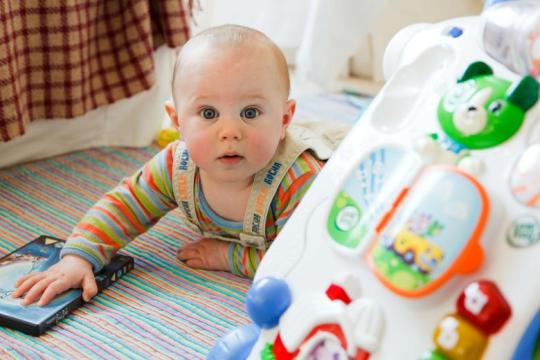
Selecting educational toys for your child can be a fun and rewarding way to support their learning and development. Here's a list of top 10 learning resources and toys that can enhance your child's educational journey:
1. LEGO Education Sets:
LEGO sets designed for education can help improve creativity, problem-solving skills, and spatial awareness.
2. Osmo - Genius Starter Kit:
Osmo combines physical play with digital learning. It includes interactive games that cover various subjects, including math, spelling, and creativity.
3. Botley 2.0 Coding Robot:
This coding robot introduces children to the basics of programming through hands-on activities. It helps develop logical thinking and problem-solving skills.
4. LeapFrog LeapReader Reading and Writing System:
LeapReader is an interactive pen that helps children with reading and writing skills. It provides audio feedback, pronunciation guidance, and interactive activities.
5. Snap Circuits Electronics Exploration Kit:
Snap Circuits allow kids to build simple electrical circuits in a hands-on and safe way. It's a great introduction to the basics of electronics.
6. Melissa & Doug Wooden Pattern Blocks and Boards:
This classic toy helps with spatial awareness and fine motor skills. Children can use colorful wooden blocks to complete patterns or create their own designs.
7. National Geographic Break Open Geodes Kit:
This kit combines science and geology, allowing kids to break open real geodes and discover the crystals inside. It's a hands-on way to spark an interest in Earth sciences.
8. Math Bingo Game:
Educational board games, like Math Bingo, can make learning math concepts enjoyable. They reinforce basic arithmetic skills in a playful setting.
9. Playfoam Shape & Learn Alphabet Set:
Playfoam is a mess-free modeling material. This set focuses on the alphabet, helping kids learn letters and build their fine motor skills.
10. Magna-Tiles Clear Colors 100 Piece Set:
Magna-Tiles are magnetic building tiles that promote spatial reasoning and creativity. Children can create 3D structures while exploring math and geometry concepts.
When choosing educational toys, consider your child's age, interests, and the skills you want to reinforce. Remember that the best learning happens when children are engaged and having fun!
In 2023, the dedicated team at BBwelbox Organization continued their unwavering commitment to shaping the future for children through groundbreaking research. Focused on enriching the lives of youngsters, our team delved into key areas influencing child development, education, and overall well-being. This year's most valuable research for kids reflects our passion for creating a positive impact on the next generation. By uncovering innovative insights and valuable knowledge, we aim to contribute to the holistic growth and nurturing of young minds, paving the way for a brighter and more promising future ( Toys to Enhance Your Child's Educational Journey )
READ FOR MORE INFO SO PLEASE CLICK HERE & VISIT OUR MAIN WEB PORTAL
#Babylistwelcomebox#besteducationaltoysfor3yearolds#bestlearningtoysfor2yearolds#bestlearningtoysfor3yearolds#educationaltoys#learningresourcestoys#learningtoys#preschooltoys
4 notes
·
View notes
Text
The Best Learning Resources Toys for Children's Cognitive Development

In a world where early childhood education plays a crucial role in shaping a child's future, selecting the right learning resources toys can make a significant impact on their cognitive development. These toys not only entertain but also engage young minds, fostering essential skills that form the foundation for a lifetime of learning.
Building Blocks for Creativity: Building blocks are timeless classics that promote spatial awareness, hand-eye coordination, and problem-solving skills. As children stack and connect blocks, they enhance their fine motor skills while exploring the principles of balance and stability.
Educational Puzzles: Puzzles come in various forms and themes, offering an enjoyable way for children to develop critical thinking and logical reasoning. From shape and color recognition to more complex jigsaw puzzles, these activities stimulate the brain and enhance cognitive abilities.
STEM-Focused Kits: Introducing Science, Technology, Engineering, and Mathematics (STEM) concepts at an early age can be fun with hands-on kits. Whether it's a simple robotics kit or a science experiment set, these toys encourage curiosity and a love for learning.
Interactive Learning Tablets: Designed specifically for young learners, interactive tablets provide a tech-savvy approach to education. With age-appropriate apps and games, children can reinforce basic skills such as counting, letter recognition, and early language development.
Artistic Expression Tools: Creative play is crucial for cognitive development. Toys that encourage artistic expression, such as coloring books, drawing pads, and craft supplies, help children develop fine motor skills, boost imagination, and express themselves visually.
Language Development Games: Games that focus on language development, such as word puzzles, storytelling cards, and language-building board games, contribute to the enhancement of vocabulary, language comprehension, and communication skills.
Musical Instruments: Musical toys, including simple instruments like drums, xylophones, and keyboards, not only introduce children to the world of music but also enhance auditory discrimination and rhythm recognition.
Remember, the key is to provide a balance between fun and learning. By incorporating these top learning resources toys into a child's playtime, parents and caregivers can actively contribute to their cognitive development, setting the stage for a lifelong love of learning.
#learningresourcestoys#Babylistwelcomebox#besteducationaltoysfor3yearolds#bestlearningtoysfor2yearolds#bestlearningtoysfor3yearolds#educationaltoys#learningtoys#preschooltoys
3 notes
·
View notes
Text
Playful Pathways to Knowledge: The Top Learning Resources Toys for Children
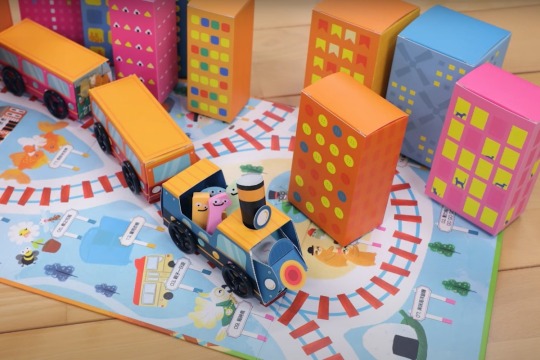
Choosing the right learning resources and toys for children is crucial for their cognitive and developmental growth. Here's a list of top learning resources and toys for children, considering various age groups and developmental stages:
LEGO and Building Blocks:
Age Group: 2+
Benefits: Enhances fine motor skills, creativity, spatial awareness, and problem-solving.
Puzzles:
Age Group: 2+
Benefits: Develops problem-solving skills, hand-eye coordination, and spatial reasoning.
Educational Board Games:
Age Group: 3+
Benefits: Teaches teamwork, strategy, counting, and other academic skills depending on the game.
Art Supplies:
Age Group: 3+
Benefits: Encourages creativity, fine motor skills, and self-expression.
Books:
Age Group: All ages
Benefits: Develops language skills, imagination, and a love for reading.
Musical Instruments:
Age Group: 2+
Benefits: Enhances auditory skills, rhythm recognition, and creativity.
Educational Apps and Games:
Age Group: Varies (there are apps for different age ranges)
Benefits: Teaches academic concepts in an interactive and engaging manner.
Montessori Materials:
Age Group: 2+
Benefits: Offers hands-on learning experiences, promotes independence, and focuses on sensory development.
STEM (Science, Technology, Engineering, and Math) Toys:
Age Group: 4+
Benefits: Introduces basic STEM concepts through play, encourages problem-solving, and critical thinking.
Educational Toys with Augmented Reality (AR) or Virtual Reality (VR):
Age Group: 4+
Benefits: Combines technology with learning, making education more interactive and engaging.
Outdoor Exploration Kit:
Age Group: 4+
Benefits: Fosters a love for nature, encourages curiosity, and promotes physical activity.
Language Learning Games:
Age Group: 4+
Benefits: Introduces new languages in a playful way, enhancing language skills and cultural awareness.
Coding Toys:
Age Group: 5+
Benefits: Introduces basic coding concepts, logic, and problem-solving skills.
Scientific Experiment Kits:
Age Group: 6+
Benefits: Encourages scientific thinking, experimentation, and understanding of basic scientific principles.
Interactive Globes and Maps:
Age Group: 6+
Benefits: Enhances geography knowledge, spatial awareness, and curiosity about the world.
When choosing learning resources and toys for children, it's important to consider their individual interests, developmental stage, and the specific skills you want to promote. Always prioritize safety and age-appropriateness in your selections.
#learningresourcestoys#Babylistwelcomebox#besteducationaltoysfor3yearolds#bestlearningtoysfor2yearolds#bestlearningtoysfor3yearolds#educationaltoys#learningtoys#preschooltoys
3 notes
·
View notes
Text
Unveiling the Best Learning Resources Toys for Child Development

In the dynamic world of child development, choosing the right learning resources toys can significantly impact a child's growth and cognitive skills. Let's uncover a selection of the best options that seamlessly blend education with play.
1. Building Brilliance with Blocks
Building blocks are not just for play; they're essential for developing spatial awareness and fine motor skills.
Choose sets that encourage creativity and problem-solving.
2. Puzzles: Piecing Together Cognitive Skills
Puzzles engage young minds in critical thinking and problem-solving exercises.
Opt for varying difficulty levels to challenge and stimulate cognitive development.
3. Games That Educate: Play with a Purpose
Board games aren't just fun; they enhance social skills, strategic thinking, and even introduce basic math and language concepts.
Look for games that balance entertainment with educational value.
4. STEM Toys: Building Future Innovators
Science, Technology, Engineering, and Math (STEM) toys introduce kids to these fundamental concepts in a playful way.
Foster a love for learning and curiosity about the world around them.
5. Artistic Expression: Colors and Creativity
Art supplies like crayons, markers, and drawing pads nurture creativity and fine motor skills.
Encourage self-expression through artistic endeavors.
6. Musical Instruments: Harmonizing Development
Mini keyboards, drums, and simple instruments enhance auditory skills and rhythm appreciation.
Unleash the potential for a lifelong love of music.
7. Early Literacy Tools: Adventures in Reading
Interactive books with textures, sounds, and simple words lay the foundation for language development.
Make reading an enjoyable and interactive experience.
8. Outdoor Exploration: Nature's Classroom
Magnifying glasses, binoculars, or bug-catching kits instill a love for the environment and curiosity about the natural world.
Learning extends beyond the classroom into the great outdoors.
9. Coding Toys: Tech-Savvy Fun
Age-appropriate coding games and robots introduce basic programming concepts in a playful manner.
Prepare kids for the digital age with entertaining coding experiences.
10. Inclusive Toys: Building Empathy and Understanding
Multi-player games that emphasize cooperation and teamwork contribute to emotional intelligence.
Encourage social interaction and understanding of diverse perspectives.
Incorporating these learning resources toys into a child's playtime not only ensures a good time but also lays the foundation for lifelong learning. Strike the perfect balance between education and fun to foster a well-rounded and engaged young mind.
#learningresourcestoys#Babylistwelcomebox#besteducationaltoysfor3yearolds#bestlearningtoysfor2yearolds#bestlearningtoysfor3yearolds#educationaltoys#learningtoys#preschooltoys
3 notes
·
View notes
Text
Unlocking Potential: The Educational Wonders of Learning Resources Toys
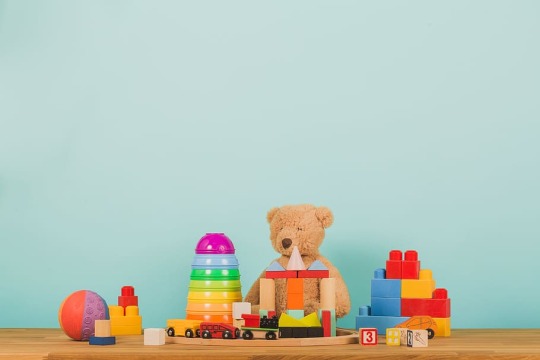
Dive into the world of educational play with Learning Resources Toys, where fun seamlessly intertwines with valuable learning experiences. These toys are more than just playthings; they are tools designed to stimulate young minds and foster essential skills. Here's a brief exploration of the educational wonders these toys bring to the table.
**1. Hands-On Learning:
Learning Resources Toys emphasize hands-on experiences, allowing children to actively engage with educational concepts. Whether it's building structures, solving puzzles, or conducting simple experiments, these toys make learning a tangible and memorable adventure.
**2. STEM Skills Development:
Many Learning Resources Toys focus on STEM (Science, Technology, Engineering, and Math) skills. From coding robots to building sets, these toys introduce foundational principles in a playful manner, nurturing a love for these critical subjects from an early age.
**3. Creativity Unleashed:
Sparking creativity is a key element of Learning Resources Toys. With imaginative playsets and open-ended building materials, children are encouraged to think outside the box, express themselves, and develop a creative mindset.
**4. Social Interaction:
Some toys are designed for collaborative play, promoting social interaction and teamwork. Pretend playsets, for example, help children develop communication skills, empathy, and an understanding of social dynamics.
**5. Cognitive Challenges:
Learning Resources Toys offer age-appropriate cognitive challenges. Whether it's sorting shapes, counting with math cubes, or solving puzzles, these activities enhance cognitive abilities, problem-solving skills, and critical thinking.
**6. Real-World Connection:
Many toys mimic real-world scenarios, making learning relatable and applicable to everyday life. This connection helps children understand the practical implications of their newfound knowledge.
**7. Parent and Educator Approved:
Learning Resources is a trusted brand among parents and educators. The toys are carefully crafted with educational goals in mind, aligning with curriculum standards and developmental milestones.
In conclusion, Learning Resources Toys go beyond mere entertainment, providing a rich educational foundation. By incorporating these toys into playtime, caregivers and educators can witness the magic of learning unfold, helping children develop essential skills in a joyful and engaging manner.
#learningresourcestoys#Babylistwelcomebox#besteducationaltoysfor3yearolds#bestlearningtoysfor2yearolds#bestlearningtoysfor3yearolds#educationaltoys#learningtoys#preschooltoys
3 notes
·
View notes
Text
Unlocking Educational Fun: Exploring the Impact of Learning Resources Toys on Child Development

Learning resources toys are designed to be both entertaining and educational, aiming to support children's cognitive, physical, and social development. The impact of these toys on child development is multifaceted, encompassing various aspects of learning and skill-building. Here are some key ways in which learning resources toys can contribute to a child's development:
Cognitive Development:
Problem-Solving Skills: Many educational toys are designed to challenge children to solve problems and think critically. Puzzles, building blocks, and strategy games can enhance cognitive skills and problem-solving abilities.
Cognitive Stimulation: Toys that encourage exploration, experimentation, and imagination stimulate a child's cognitive development. These activities can include shape sorting, counting, and imaginative play.
Language and Communication Skills:
Vocabulary Building: Educational toys often incorporate language development elements. Toys that involve storytelling, naming objects, or interactive games can contribute to vocabulary building and language skills.
Social Interaction: Some toys are designed for group play, promoting social interaction and communication among children. Cooperative play with peers can enhance language development and interpersonal skills.
Fine and Gross Motor Skills:
Manipulative Skills: Building blocks, puzzles, and construction toys can help develop fine motor skills as children grasp, manipulate, and assemble different pieces.
Physical Activity: Certain educational toys, such as those involving physical activity or outdoor play, contribute to the development of gross motor skills, coordination, and balance.
Creativity and Imagination:
Open-Ended Play: Toys that allow for open-ended play, such as building sets or art supplies, encourage creativity and imagination. These activities promote divergent thinking and the ability to generate unique ideas.
Role-Playing: Dolls, action figures, and playsets can facilitate role-playing scenarios, helping children explore and understand different roles and situations.
Math and Numeracy Skills:
Counting and Sorting: Toys that involve counting, sorting, and categorizing objects contribute to the development of basic math and numeracy skills.
Educational Games: Board games and card games designed for educational purposes can introduce mathematical concepts in an engaging manner.
Emotional and Social Development:
Empathy and Cooperation: Toys that encourage sharing, taking turns, and cooperative play contribute to the development of empathy and social skills.
Emotional Expression: Some educational toys, such as art supplies or storytelling tools, provide avenues for children to express their emotions and thoughts.
Technology and STEM Skills:
Coding and Robotics Kits: Some learning resources toys are designed to introduce basic coding and robotics concepts, promoting STEM (science, technology, engineering, and mathematics) skills from an early age.
It's important to note that while educational toys can be valuable tools for child development, they are most effective when used in conjunction with a supportive and engaging learning environment. Additionally, the age appropriateness of toys should be considered to ensure that they align with a child's developmental stage. Parents, caregivers, and educators play a crucial role in guiding and facilitating meaningful play experiences with educational toys.
#learningresourcestoys#Babylistwelcomebox#besteducationaltoysfor3yearolds#bestlearningtoysfor2yearolds#bestlearningtoysfor3yearolds#educationaltoys#learningtoys#preschooltoys
3 notes
·
View notes
Text
Playful Pedagogy: Exploring the Impact of Learning Resources Toys on Child Development
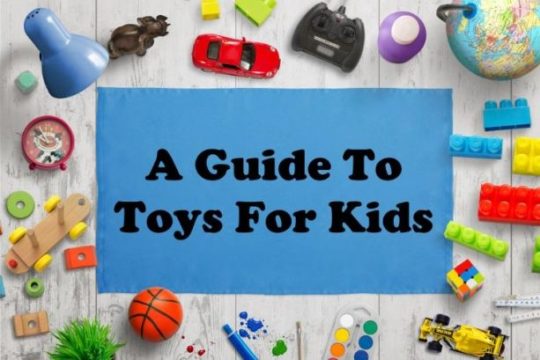
The impact of learning resource toys on child development is a subject of considerable importance and interest in the field of early childhood education. These toys play a pivotal role in fostering cognitive, social, and emotional development in children. Educational toys are designed to stimulate various aspects of a child's intellect, such as problem-solving skills, creativity, and critical thinking. Through interactive play, children not only enhance their fine and gross motor skills but also develop a deeper understanding of concepts such as numbers, letters, and shapes. Moreover, learning resource toys often encourage cooperative play, helping children build essential social skills like sharing, communication, and teamwork. The positive effects of these toys extend beyond the immediate educational context, contributing significantly to a child's overall development and laying a solid foundation for future academic success. As researchers continue to delve into the intricacies of early childhood education, the role of learning resource toys emerges as a key factor in shaping the learning experiences and developmental trajectories of young minds.
#Babylistwelcomebox#besteducationaltoysfor3yearolds#bestlearningtoysfor2yearolds#bestlearningtoysfor3yearolds#educationaltoys#learningresourcestoys#learningtoys#preschooltoys
3 notes
·
View notes
Text
Unlocking Potential: The Top Educational Toys and Learning Resources for Child Development

Certainly! Educational toys and learning resources play a crucial role in fostering child development by promoting cognitive, emotional, social, and physical skills. Here are some top educational toys and resources across different age groups:
1. Infants (0-12 months):
Soft Books:
Cloth or soft books with vibrant colors and different textures stimulate a baby's senses.
High-Contrast Toys:
Toys with bold patterns and high-contrast colors enhance visual development.
Baby Gyms:
These provide a safe space for infants to explore and develop motor skills.
2. Toddlers (1-3 years):
Building Blocks:
Simple building blocks help improve fine motor skills and spatial awareness.
Puzzles:
Basic puzzles with large pieces promote problem-solving and hand-eye coordination.
Art Supplies:
Crayons, non-toxic paints, and paper encourage creativity and fine motor skills.
3. Preschoolers (3-5 years):
Board Games:
Simple board games teach turn-taking, counting, and social skills.
Educational Apps:
Interactive apps with age-appropriate content can support early literacy and numeracy.
Playdough:
Enhances creativity, fine motor skills, and imaginative play.
4. Early Elementary (6-8 years):
STEM Kits:
Science, technology, engineering, and math kits foster critical thinking and problem-solving.
Reading and Writing Tools:
Age-appropriate books, writing journals, and storytelling games support literacy development.
Educational Board Games:
Games that involve strategy, critical thinking, and teamwork.
5. Upper Elementary (9-12 years):
Science Kits:
More advanced science kits for hands-on experiments and exploration.
Coding Toys:
Introduce basic coding concepts through fun and interactive toys.
Educational Software:
Interactive software for subjects like math, language arts, and geography.
6. Middle School (12-14 years):
Robotics Kits:
Engage in building and programming robots to promote STEM skills.
Language Learning Apps:
Apps for learning a new language can be both educational and fun.
Math and Logic Games:
Challenging games that enhance problem-solving and critical thinking.
7. High School (14+ years):
DIY Electronics Kits:
Kits for building electronic devices or circuits encourage understanding of technology.
Educational Board Games:
Advanced strategy games that challenge and stimulate the mind.
Online Courses and Tutorials:
Platforms offering courses on various subjects for self-directed learning.
8. All Ages:
Educational Subscriptions:
Monthly subscription boxes that deliver educational activities and projects.
Educational Videos and Documentaries:
Platforms with age-appropriate content for learning about the world.
Interactive Learning Platforms:
Online platforms offering adaptive learning experiences tailored to each child's level.
Remember that the effectiveness of these resources depends on the child's individual interests and needs. Parents and educators can observe and adapt based on the child's preferences and developmental stage.
In 2023, the dedicated team at BBwelbox Organization continued their unwavering commitment to shaping the future for children through groundbreaking research. Focused on enriching the lives of youngsters, our team delved into key areas influencing child development, education, and overall well-being. This year's most valuable research for kids reflects our passion for creating a positive impact on the next generation. By uncovering innovative insights and valuable knowledge, we aim to contribute to the holistic growth and nurturing of young minds, paving the way for a brighter and more promising future ( Necessity of choosing smart toys )
READ FOR MORE INFO SO PLEASE CLICK HERE & VISIT OUR MAIN WEB PORTAL
#Babylistwelcomebox#besteducationaltoysfor3yearolds#bestlearningtoysfor2yearolds#bestlearningtoysfor3yearolds#educationaltoys#learningresourcestoys#learningtoys#preschooltoys
3 notes
·
View notes
Text
The Impact of Learning Resources Toys on Child Development
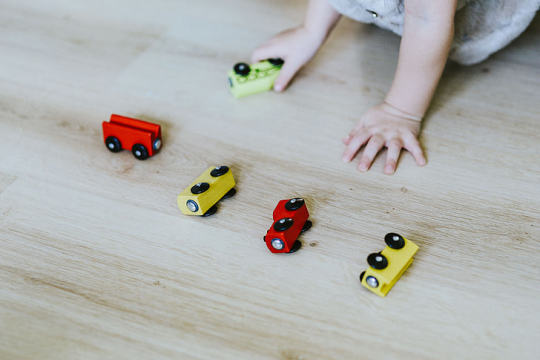
Childhood, with its boundless curiosity and innate desire to explore, lays the foundation for a lifetime of learning. In this dynamic journey of growth and development, the role of learning resources toys cannot be overstated. These thoughtfully designed playthings transcend mere entertainment; they become essential tools in shaping a child's cognitive, emotional, and social capacities.
At the forefront of this developmental orchestra are building blocks, timeless in their simplicity yet profound in their impact. As children stack and connect these colorful blocks, they engage in a tactile exploration that fosters spatial awareness, hand-eye coordination, and problem-solving skills. The seemingly simple act of play becomes a canvas for the development of fundamental cognitive abilities.
Educational puzzles, another cornerstone of learning resources toys, offer a cognitive workout that is as enjoyable as it is beneficial. Ranging from basic shape and color recognition to more intricate jigsaw puzzles, these activities stimulate critical thinking and logical reasoning. The joy of piecing together a puzzle goes beyond mere accomplishment; it is a celebration of mental acuity.
In an era where technological literacy is increasingly paramount, STEM-focused kits take center stage. These hands-on experiences introduce Science, Technology, Engineering, and Mathematics concepts in a playful manner, cultivating a curiosity for the world of innovation. As children experiment and build, they not only gain practical knowledge but also develop a problem-solving mindset that is invaluable in the real world.
Interactive learning tablets, designed with the needs of young learners in mind, offer a tech-infused avenue for education. Age-appropriate apps and games provide a fun yet educational experience, reinforcing basic skills such as counting, letter recognition, and early language development. The digital realm becomes a supportive environment for early learning, preparing children for the technologically advanced landscape they will navigate in the future.
Artistic expression tools, from coloring books to drawing pads and craft supplies, nurture the creative spirit within every child. As they explore colors, shapes, and textures, they not only enhance fine motor skills but also learn to express themselves visually. The arts become a language through which emotions and ideas find a vibrant form of communication.
Language development games, in various formats like word puzzles, storytelling cards, and language-building board games, contribute significantly to the enrichment of vocabulary and communication skills. These games foster a love for language and storytelling, empowering children with the tools to articulate their thoughts and connect with the world around them.
Musical instruments, whether simple drums, xylophones, or keyboards, introduce children to the world of music. Beyond the joy of creating melodious tunes, these instruments enhance auditory discrimination and rhythm recognition. The language of music becomes a unique avenue for sensory development.
The holistic impact of learning resources toys extends beyond individual skill development. These toys also lay the groundwork for essential social and emotional growth. Cooperative play, as children engage in building projects together or collaborate on solving puzzles, instills teamwork and communication skills. The joy of shared achievements becomes a lesson in empathy and cooperation.
In conclusion, the impact of learning resources toys on child development is multifaceted and profound. By providing a diverse array of experiences, these toys become catalysts for cognitive, emotional, and social growth. In the realm of play, children discover not just the joy of the moment but also the building blocks of a future rich in knowledge, creativity, and interpersonal skills. Learning resources toys, in their various forms, become companions in the exciting journey of childhood—a journey where every play session is a step towards a brighter, more informed future.
#learningresourcestoys#Babylistwelcomebox#besteducationaltoysfor3yearolds#bestlearningtoysfor2yearolds#bestlearningtoysfor3yearolds#educationaltoys#learningtoys#preschooltoys
2 notes
·
View notes
Text
The Impact of Learning Resources Toys on Holistic Child Development
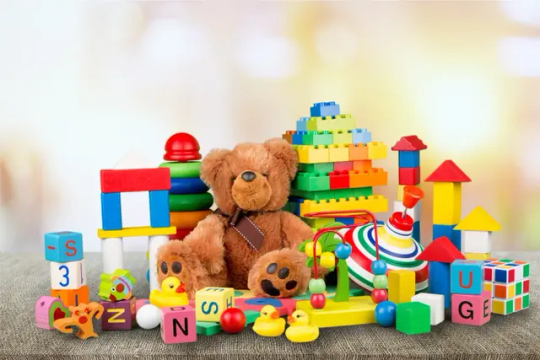
The impact of learning resources toys on holistic child development is profound and multifaceted, encompassing cognitive, physical, social, and emotional domains. These educational toys serve as catalysts for cognitive development by engaging children in activities that enhance problem-solving skills and critical thinking. Puzzles, building blocks, and strategy games challenge young minds, fostering the ability to analyze and solve problems effectively. Language and communication skills are nurtured through toys that encourage vocabulary building, storytelling, and interactive games, facilitating linguistic development. Moreover, learning resources toys play a pivotal role in fine and gross motor skill development. From manipulative activities like assembling building blocks to engaging in physical play, these toys contribute to the refinement of motor skills and coordination. Creativity and imagination are sparked by toys that allow for open-ended play, such as construction sets and art supplies, fostering divergent thinking and imaginative exploration. Additionally, these toys play a vital role in cultivating emotional and social intelligence. Those promoting empathy, cooperation, and shared play contribute to the development of interpersonal skills, while activities like role-playing enable children to explore various emotional expressions. Furthermore, learning resources toys often integrate math and numeracy concepts seamlessly into play, offering a playful approach to foundational mathematical understanding. As technology becomes an integral part of our world, some educational toys also introduce coding and robotics concepts, preparing children for the demands of a STEM-focused future. In essence, learning resources toys go beyond mere entertainment, becoming essential tools that holistically nurture a child's development across various dimensions, laying the foundation for a lifelong love of learning.
#learningresourcestoys#Babylistwelcomebox#besteducationaltoysfor3yearolds#bestlearningtoysfor2yearolds#bestlearningtoysfor3yearolds#educationaltoys#learningtoys#preschooltoys
2 notes
·
View notes
Text
Unlocking Potential: The Power of Learning Resources Toys in Child Development
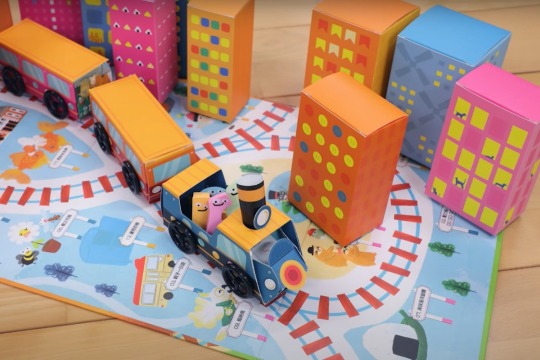
The Power of Learning Resources Toys in Child Development" underscores the significant role that thoughtfully designed educational toys play in shaping the cognitive and developmental landscape of children. These toys go beyond mere entertainment, acting as catalysts for intellectual growth, problem-solving skills, and social development. Learning resources toys engage children in activities that stimulate their imagination, creativity, and critical thinking. From building blocks that encourage spatial awareness to interactive educational tablets fostering early literacy, these toys provide a dynamic and hands-on approach to learning. STEM-oriented toys, such as robotics kits and science experiments, introduce youngsters to the wonders of science, technology, engineering, and mathematics in an accessible and enjoyable manner. Furthermore, artistic tools like drawing kits and musical instruments contribute to the development of fine motor skills and self-expression. By integrating these diverse learning resources into a child's environment, parents and educators create an enriching atmosphere that not only supports academic growth but also nurtures essential life skills, ensuring a well-rounded and holistic approach to child development
#learningresourcestoys#Babylistwelcomebox#besteducationaltoysfor3yearolds#bestlearningtoysfor2yearolds#bestlearningtoysfor3yearolds#educationaltoys#learningtoys#preschooltoys
2 notes
·
View notes
Text
Exploring the Impact: The Power of Learning Resources Toys in Child Development

Learning resources toys play a crucial role in the overall development of children. These toys are designed not only for entertainment but also to stimulate cognitive, physical, social, and emotional growth. Here are some ways in which learning resources toys contribute to child development:
1. Cognitive Development:
Problem-solving skills:
Toys that involve puzzles, building blocks, and other cognitive challenges encourage children to think critically and solve problems.
Educational games:
Learning resources toys often incorporate educational elements, such as letters, numbers, and shapes, helping children develop early math and language skills.
2. Fine and Gross Motor Skills:
Manipulative skills:
Toys that require grasping, squeezing, stacking, and other fine motor movements help children develop hand-eye coordination and dexterity.
Physical activity:
Some learning resources toys, like those that involve climbing, crawling, or balancing, contribute to the development of gross motor skills.
3. Social and Emotional Development:
Cooperative play:
Toys that encourage group activities promote teamwork, cooperation, and sharing, fostering social skills.
Emotional expression:
Toys can be a means for children to express their emotions and understand the feelings of others, contributing to emotional intelligence.
4. Creativity and Imagination:
Open-ended play:
Many learning resources toys are designed to be open-ended, allowing children to use their creativity and imagination to come up with various scenarios and stories.
Artistic expression:
Toys that involve drawing, coloring, and crafting help nurture a child's artistic abilities and self-expression.
5. Language and Communication Skills:
Vocabulary development:
Toys with labels, letters, or words can contribute to language development by expanding a child's vocabulary.
Role-playing:
Toys that involve role-playing scenarios, such as kitchen sets or doctor kits, promote language and communication skills as children engage in imaginative conversations.
6. Cultural Awareness:
Diversity in toys:
Learning resources toys that represent different cultures, ethnicities, and backgrounds help children develop an appreciation for diversity and broaden their understanding of the world.
7. Critical Thinking and Planning:
Building and construction toys:
Activities that involve planning and building, such as building blocks or construction sets, enhance a child's spatial awareness, problem-solving, and planning skills.
In summary, learning resources toys provide a holistic approach to child development by targeting various aspects of cognitive, physical, social, and emotional growth. These toys create a fun and engaging environment that supports a child's natural curiosity, helping them acquire essential skills for future success.
In 2023, the dedicated team at BBwelbox Organization continued their unwavering commitment to shaping the future for children through groundbreaking research. Focused on enriching the lives of youngsters, our team delved into key areas influencing child development, education, and overall well-being. This year's most valuable research for kids reflects our passion for creating a positive impact on the next generation. By uncovering innovative insights and valuable knowledge, we aim to contribute to the holistic growth and nurturing of young minds, paving the way for a brighter and more promising future ( Some categories of learning resources toys )
READ FOR MORE INFO SO PLEASE CLICK HERE & VISIT OUR MAIN WEB PORTAL
#Babylistwelcomebox#besteducationaltoysfor3yearolds#bestlearningtoysfor2yearolds#bestlearningtoysfor3yearolds#educationaltoys#learningresourcestoys#learningtoys#preschooltoys
2 notes
·
View notes
Text
Playful Education: Exploring the Impact of Learning Resources Toys on Children's Development

Playful education, often facilitated through the use of learning resource toys, has a profound impact on children's development. These toys are designed not only to entertain but also to stimulate various aspects of cognitive, social, emotional, and physical development. Let's explore the positive effects of learning resource toys on children:
1. Cognitive Development:
a. Problem-solving skills: Toys like puzzles, building blocks, and educational games encourage critical thinking and problem-solving abilities.
b. Memory enhancement: Memory-based games and activities help enhance a child's memory and cognitive recall.
2. Social Development:
a. Communication skills: Toys that involve role-playing, storytelling, or board games foster communication skills and language development.
b. Teamwork and cooperation: Multiplayer games teach children the importance of teamwork and cooperation, promoting social interaction.
3. Emotional Development:
a. Empathy and understanding: Dolls, action figures, or games with characters allow children to explore emotions and develop empathy.
b. Emotional regulation: Engaging with toys helps children express and manage their emotions in a safe and controlled environment.
4. Physical Development:
a. Fine motor skills: Construction toys, art supplies, and manipulative games contribute to the development of fine motor skills.
b. Gross motor skills: Outdoor toys, sports equipment, and physical games enhance coordination and gross motor skills.
5. Creativity and Imagination:
a. Open-ended play: Toys that encourage open-ended play, such as building blocks or art materials, stimulate creativity and imagination.
b. Role-playing: Dolls, costumes, and pretend play help children explore different roles and scenarios, fostering creativity.
6. Educational Foundation:
a. Early learning concepts: Learning resource toys often incorporate educational elements, introducing children to basic concepts such as colors, numbers, and letters in an enjoyable manner.
b. Curiosity and love for learning: Engaging toys create a positive association with learning, sparking curiosity and a love for discovering new things.
7. Cultural Awareness:
a. Diverse representation: Toys reflecting various cultures and backgrounds promote cultural awareness and inclusivity.
b. Global understanding: Geography-based games or toys can introduce children to different countries and customs, fostering a sense of global awareness.
8. Adaptability and Resilience:
a. Trial and error: Certain toys, especially those involving building or problem-solving, teach children the value of persistence and learning from mistakes.
b. Adapting to different scenarios: Role-playing games help children adapt to different situations and develop resilience in the face of challenges.
In conclusion, learning resource toys play a pivotal role in shaping a child's holistic development, providing a fun and interactive way for them to acquire essential skills and knowledge. Parents and educators should carefully select toys that align with a child's age and developmental stage, ensuring a positive and enriching play experience. BBwelbox Organization's Trailblazing Research in 2023: Illuminating Pathways to Holistic Child Development and Education
READ FOR MORE INFO SO PLEASE CLICK HERE & VISIT OUR MAIN WEB PORTAL
#Babylistwelcomebox#besteducationaltoysfor3yearolds#bestlearningtoysfor2yearolds#bestlearningtoysfor3yearolds#educationaltoys#learningresourcestoys#learningtoys#preschooltoys
2 notes
·
View notes
Text
Empowering Minds: Smart Learning Resources Toys for Every Age Group
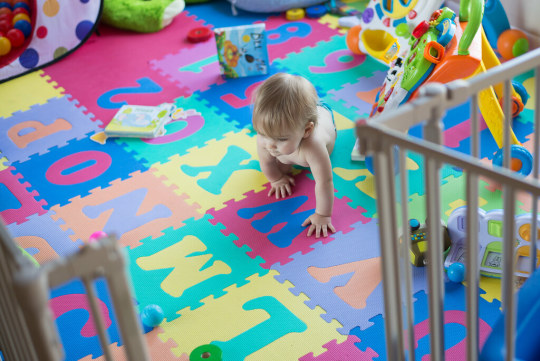
Smart Learning Resources Toys or educational Toys stimulate your toddler’s mental growth and develop their creativity level at every age. Parents of every child should grab certain smart toys for growing their kid’s communication efficiency.
Some categories of learning resources toys
1. Learning Toys Infants and Toddlers (0-2 years):
Soft Sensory Toys with Lights and Sounds: Toys with vibrant colors, different textures, and soft materials. Those that make gentle sounds or play soothing music.
Interactive Plush Toys: Soft toys that respond to touch or hugs with phrases, songs, or lights.
High-Contrast Visual Stimulation Toys: Toys with bold patterns and high-contrast colors to stimulate visual development.
2. Necessity of choosing smart toys:
Choosing toys depends on the baby’s age. Some toys can help to learn problem solving skills. Some others can prepare your child for advanced academic skills. Moreover, some smart toys can help your kids explore the best process to new ways of learning and playing. Such as puzzles, hand eye coordination toys and blocks.
3. Learning and Creative toys for your toddler:
Toys can teach your child at every age. Preschoolers can be encouraged when you choose some creative smart toys for them to develop their intelligence. There are such creative toys as essential science kits, magnetic tile set, Building blocks, colorful puzzles etc.
4. Smart Resources toys for 1-5 years old kids:
Toys are a great source of educating your child smartly and smoothly. Children find interest when they can get a source from learning with toys. There are sorting, stacking and plugging toys which are beneficial for 1-5 years old kids. This toy could teach your child to identify colors and how to count numbers. Another great toy is named Jigsaw puzzle which is easy to assemble and fun to play. Ride-on toys and scooters are a mesmerizing tool for kids to teach balancing proficiency.
5. Sensory – based smart Resources toys for smarter babies:
Developing babies’ senses and encouraging them to explore is needed for children of all ages. Sensory based toys are great for all babies because those toys are specially designed to incite the sense by providing visual and auditory experience. Some sensory based toys are babbler play kit, the medical kit, Baby Night light projector, kinetic sand set, wooden stacking toys etc.
Conclusion
So, choosing smart toys for your baby is very important to boosting exploring skills, developing knowledge, creativity level and problem-solving skills. Smart toys can be the best learning and educational opportunities for children of all ages. BBwelBox is there for you, where you can get information for baby’s development besides you can choose appropriate toys for your child from Bbwelbox.
In the ongoing pursuit of advancing child well-being, the BBwelbox organization team is thrilled to present our most valuable research for kids in 2023. This comprehensive study reflects our commitment to understanding and addressing the evolving needs of children in today’s dynamic world. Through rigorous research and innovative insights, we aim to contribute to the enhancement of child development, education, and overall happiness. Our findings aspire to empower parents, educators, and policymakers with the knowledge necessary to cultivate environments that foster the growth and flourishing of the younger generation. Together, let us continue to shape a brighter future for the children of tomorrow ( Fun and Effective Social Skills Exercises for Kids ).
In our ongoing commitment to promoting overall well-being, our dedicated team at BBwelbox has recently concluded research on natural health for parents. The significance of parental health in influencing the well-being of their children cannot be overstated. Our team’s recently published report, accessible through the provided source, encapsulates valuable insights and recommendations for cultivating a healthier lifestyle among parents. By empowering parents with evidence-based knowledge and practical guidance, we aim to foster an environment that not only supports their own well-being but also lays the foundation for the health and vitality of future generations. ( Nutrient-Rich and Delicious Healthy Breakfast to Lose Weight Recipes )
READ FOR MORE INFO SO PLEASE CLICK HERE & VISIT OUR MAIN WEB PORTAL
#Babylistwelcomebox#besteducationaltoysfor3yearolds#bestlearningtoysfor2yearolds#bestlearningtoysfor3yearolds#educationaltoys#learningresourcestoys#learningtoys#preschooltoys
2 notes
·
View notes
Text
Exploring the Educational Magic of Learning Resources Toys

Embarking on the enchanting journey of childhood development, one cannot overlook the transformative power of Learning Resources Toys, which weave a tapestry of educational magic into the fabric of play. These toys transcend mere entertainment, offering a dynamic platform for young minds to explore, create, and absorb essential skills. From the foundational brilliance of building blocks that stimulate spatial awareness and problem-solving to the captivating world of puzzles, nurturing critical thinking, each Learning Resources toy is a key unlocking a specific realm of cognitive growth. Board games seamlessly blend fun with lessons in strategy and social interaction, fostering a love for learning. STEM toys stand as beacons of innovation, introducing Science, Technology, Engineering, and Math concepts in a playful manner, cultivating a natural curiosity about the world. Art supplies become tools for self-expression, while musical instruments harmonize auditory skills. Interactive books and early literacy tools lay the groundwork for language development, making reading an adventure. Outdoor exploration kits, on the other hand, transform the backyard into a classroom, fostering an appreciation for nature. As children engage with these educational marvels, they embark on a captivating journey where play and learning intertwine, creating a foundation for a lifetime of curiosity, creativity, and continuous growth.
#learningresourcestoys#Babylistwelcomebox#besteducationaltoysfor3yearolds#bestlearningtoysfor2yearolds#bestlearningtoysfor3yearolds#educationaltoys#learningtoys#preschooltoys
1 note
·
View note